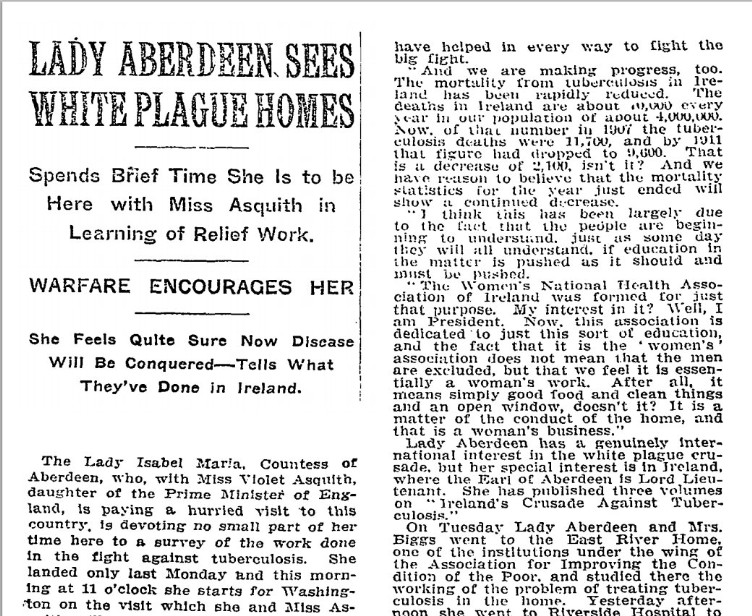dream lament - Sligo Poets
Main menu:
- Home
-
1912
- 1912
- Sligo Poetry 1912
-
1913
- 1913
- Sligo Poetry 1913
-
1914
- 1914
- Sligo Poetry 1914
-
1915
- 1915
-
Sligo Poetry 1915
- Sligo Newspaper Poems
- Sligo Champion
- Sligo Independent
- Sligo Nationalist
-
1916
- 1916
-
Sligo Poetry 1916
- Sligo Newspaper Poems 1916
- Sligo Champion
- Sligo Nationalist
- Sligo Independent
- The Poets
- Bibliography
- The Author

Sligo Champion 24 January 1914
THE INMATE’S DREAM.
(Suggested by a concert given in the workhouse)
With song and music in his ear
Long thinking of past times he lay,
And of wife and children dear
That cheered his home on Caraun Brae
Bad years and want and sickness tried,
They, one by one, from him were borne,
And when his loving helpmate died,
He sought the workhouse, bowed and worn.
To-
(For wearied out at length he dozed)
Appearing wan and worn—the same
As when in death her eyes he closed.
She said, "Too long alone you’ve mourned
Come home to us," —and on the way
He thought that by degrees returned
The beauty of her youthful days.
Their cot was all alight—he found
No change since with gay children there
They sat the blazing fire around,
In health and hopes—a happy pair.
He saw each well remembered face,
All home again though absent long,
And mirth and laughter filled the place,
With music sweet and gladsome song.
His youngest, dearest, raised a strain,
Her voice more sweet than e’er before,
And all took up the glad refrain—
We’ll part no more; we’ll part no more.
……………………………….
The old men lying near him say,
When murmuring this they thought he stirred,
And after through the dark night lay
Quite still—without a move or word.
And that when morning cold and gray,
Stole through the window ’bove his head,
Within the dreary ward he lay,
A smile upon his features—dead.
J.D.S.
The Workhouse, Tobercurry.
Sligo Champion 28 February 1914
A Labourer’s Lament
TO THE SLIGO RURAL DISTRICT COUNCIL
The following rather amusing letter was read by the Clerk from one Ned Jones at the last meeting of the Sligo Rural District Council:—
Gentlemen—In reference to my cottage, for which I have lately been appointed tenant, I made several applications to your Board to have it painted, whitewashed, and disinfected, which is not yet done. I again sincerely apply to have it put in order as soon is possible, as the advent of my wedding is approaching, and, also, this is very cold weather. I might as well be honest; I certainly am heartless, but yet I have courage. If she would but enter—but she declines absolutely to join matrimonial bonds with me until it be put in proper repair—
Now gentlemen, what is the matter?
Or why are my rights thus denied?
My cottage is not yet in order,
Tho’ I’m going to take home my bride.
Inside it’s walls she won’t enter—
She told me that once and for all—
Till my paintings are all put in order,
And the microbes removed from the wall.
And sure you can’t blame this young maiden,
With manners and features so fine;
For to shring from that terrible danger,
That’s locked in this cottage of mine.
Now, gentlemen, just for one moment
Consider this state of affairs;
I would have the ring on her finger
If my cottage was but in repair.
My intended has taught me a lesson
Which cost me some nights on the green;
I wish that she never did listen
to Honourable Lady Aberdeen.
This poem by J.D.S. confirms the author's association with Tubbercurry workhouse suggested in his Sligo Times poem of 1913 "Johnny Reid". This makes it all the more likely that the author is indeed the workhouse attendant, John Sweeney, who appears in the 1911 census.
.........................
Edward Jones, a 44 year old general labourer, unmarried, was living on his own in Mullaghnaneane, Lissadill North, Sligo in 1911 census. His house was a class two house as were all but two in the townland. Its roof was slate or tile, it had two, three or four rooms and two windows at the front.
The reference to Lady Aberdeen refers to the work she had done to highlight the dangers of tuberculosis and the importance of proper sanitation in its prevention.
In 1905 it was estimated that of every 100 deaths in Ireland each year 16 were victims of tuberculosis. Lady Aberdeen, the wife of the new Lord Lieutenant, The Earl of Aberdeen, began a campaign. In 1907 she founded the Women's National Health Association to help fight the disease, and organised a Tuberculosis Exhibition the following October. This campaign led to the building of Peamount Sanatorium in county Dublin. A Tuberculosis Prevention (Ireland) Act was passed in 1908 and a Tuberculosis Prevention (Ireland) Act (1913). Lady Aberdeen continued to camaign and edited Sláinte, a monthly magazine founded in 1909 by the WNHA, and edited an account of Ireland's Crusade Against Tuberculosis (1908-
The New York Times, 2 January 1913, reported her visit to the USA. More information.
